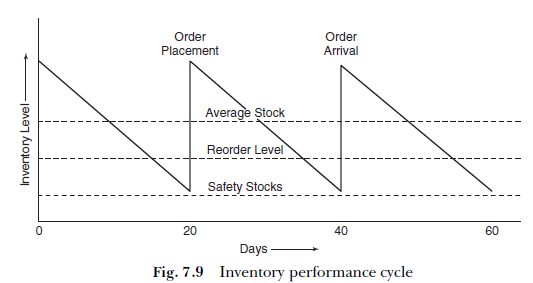These are the guidelines for inventory procurement, maintenance, positioning and placement with respect to quantity, time and customer service. Policy decisions are also concerned with managing inventory independently or interdependently across the various distribution centres. Defining policy helps in improving the inventory effectiveness across the supply chain.
1. Centralized/Decentralized System
In the centralized system inventories are stocked at one central location for distribution to customers or depots. The centralized system helps maintain tight controls on inventory movement both for replenishment and dispatches. The greatest disadvantage of the centralized system, especially as the volume of transaction grows, is a longer order performance cycle and delayed response time for the smaller but nevertheless larger number of customers. On the other hand, the decentralized systems are closer to the customer and make decisions independently. The decentralized system offers better customer service with quick response and a shorter performance cycle time. However, the controls are lax and the operating cost is higher. The management has to make a policy decision to strike a balance between customer service, controls and the cost.
2. Service Level
Service-level target is decided by the management. The inventory function should gear up to achieve the service-level target. The basis of service level is defined in terms of the following:
- Order cycle time
- Case fill rate
- Order fill rate
The order cycle time is the amount of time from the date of release of an order by the customer to the receipt of the entire ordered material at his doorstep. The case fill rate means the percentage of material available for dispatch to the quantity ordered by the customer. For example, the customer orders 10 items and only nine are available for supply, then the case fill rate is 90 per cent. The order fill rate is the percentage of orders that could be filled completely. Say, out of 100 orders received only 60 could be filled completely, then the order fill rate is 60 per cent. The traditional approach to meet the targeted customer service level is to increase the inventory level. However, the modern approach considers a faster transportation mode, better communication means, and alternative sources of supply to meet the desired customer level.
3. Stock Levels
To meet the desired level of customer service, the average level of inventory stocks to be maintained at any point of time is determined in terms of the number of days of sales value. The average inventory includes the base-level inventory, safety stock inventory and in-transit inventory (Figure 7.9).

Stocks deplete daily after orders are filled. To maintain the average level as decided before, inventory has to be ordered and replenished before it further depletes to zero. The reorder level is called a base-level inventory.
The other part of the average inventory is stock maintained to meet uncertainties or emergencies. Safety stocks are maintained to meet inventory demand that is in excess of the anticipated consumption. In fact, safety stock inventory covers short-range variations in demand. The average inventory includes one half of the ordered quantity and the safety stock inventory.
The in-transit or pipe inventory is of importance to the consigner, as the ownership of this inventory still lies with him till it reaches the destination and is handed over to the consignee. There is great uncertainty associated with the transit inventory. This inventory is not accessible and cannot be used. The whereabouts of the transit inventory are not known unless you have a sophisticated vehicle-tracking system. This is an excise-paid inventory and it covers a major portion of the value of the inventory of a company. In the JIT system the emphasis is on small consignments with frequent delivery schedules, resulting in the maximum portion of inventory in transit phase.
Source: Sople V.V (2013), Logistics Management, Pearson Education India; Third edition.

Its wonderful as your other blog posts : D, thankyou for putting up. “To be able to look back upon ones life in satisfaction, is to live twice.” by Kahlil Gibran.
Good info. Lucky me I reach on your website by accident, I bookmarked it.